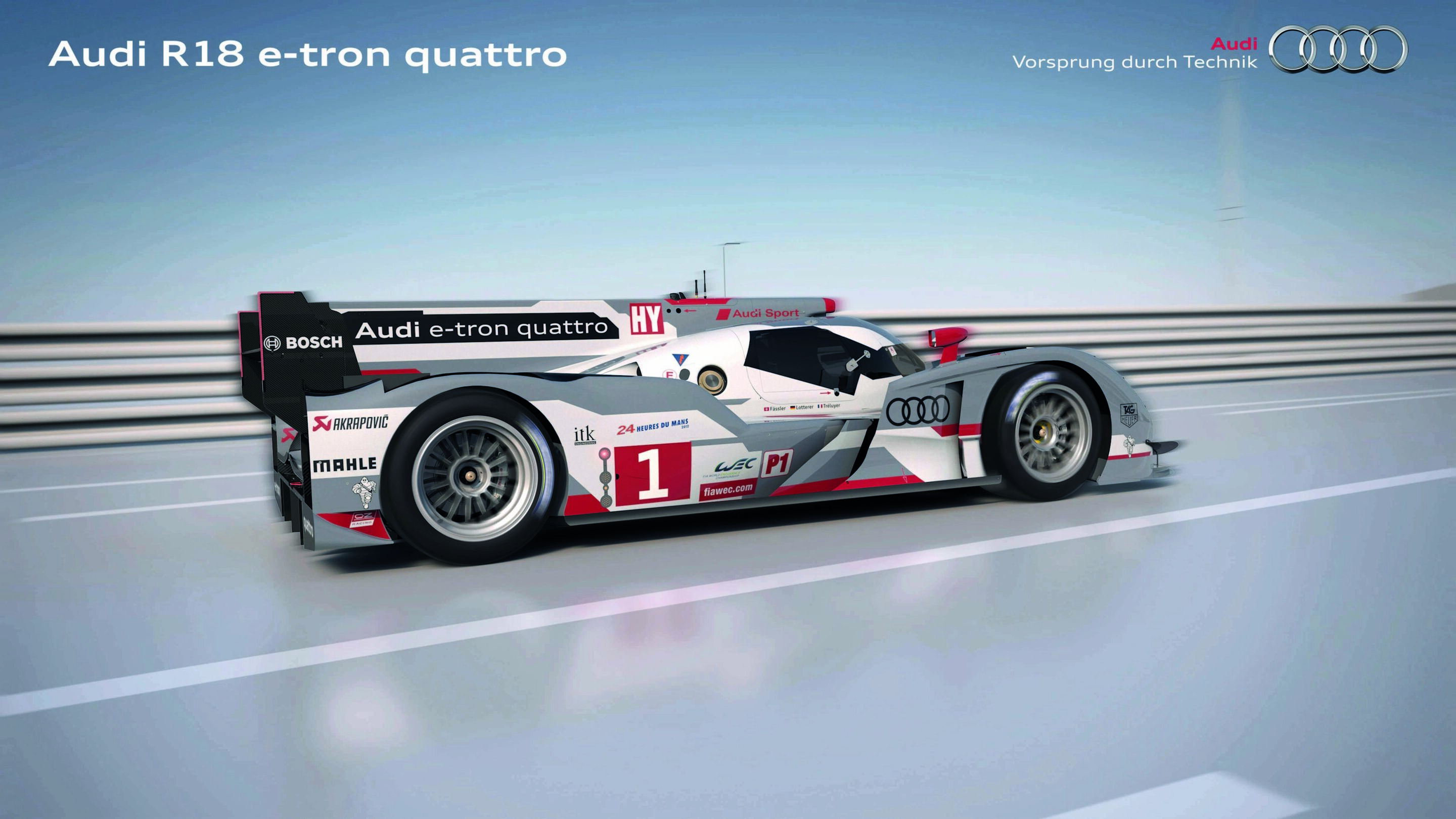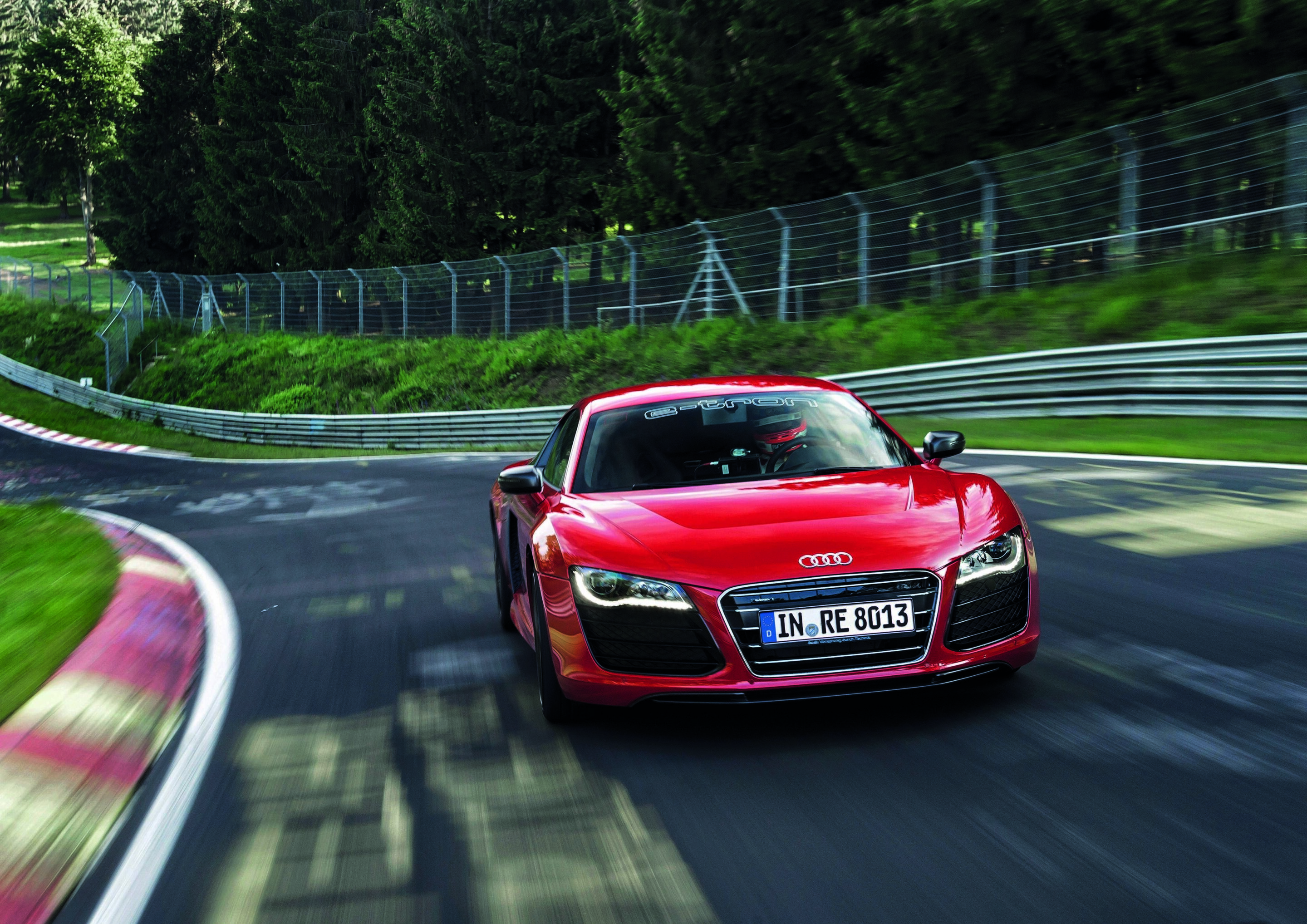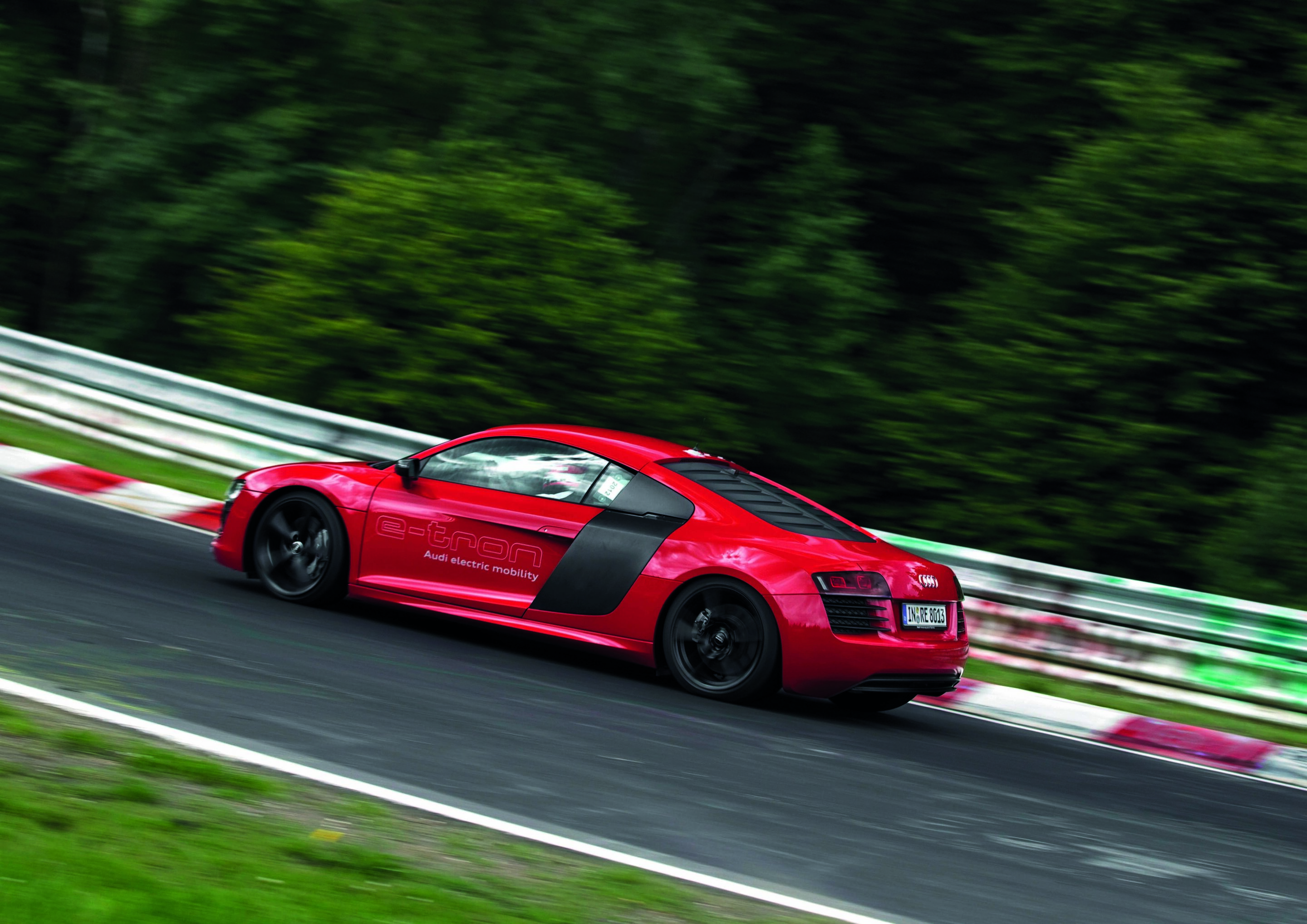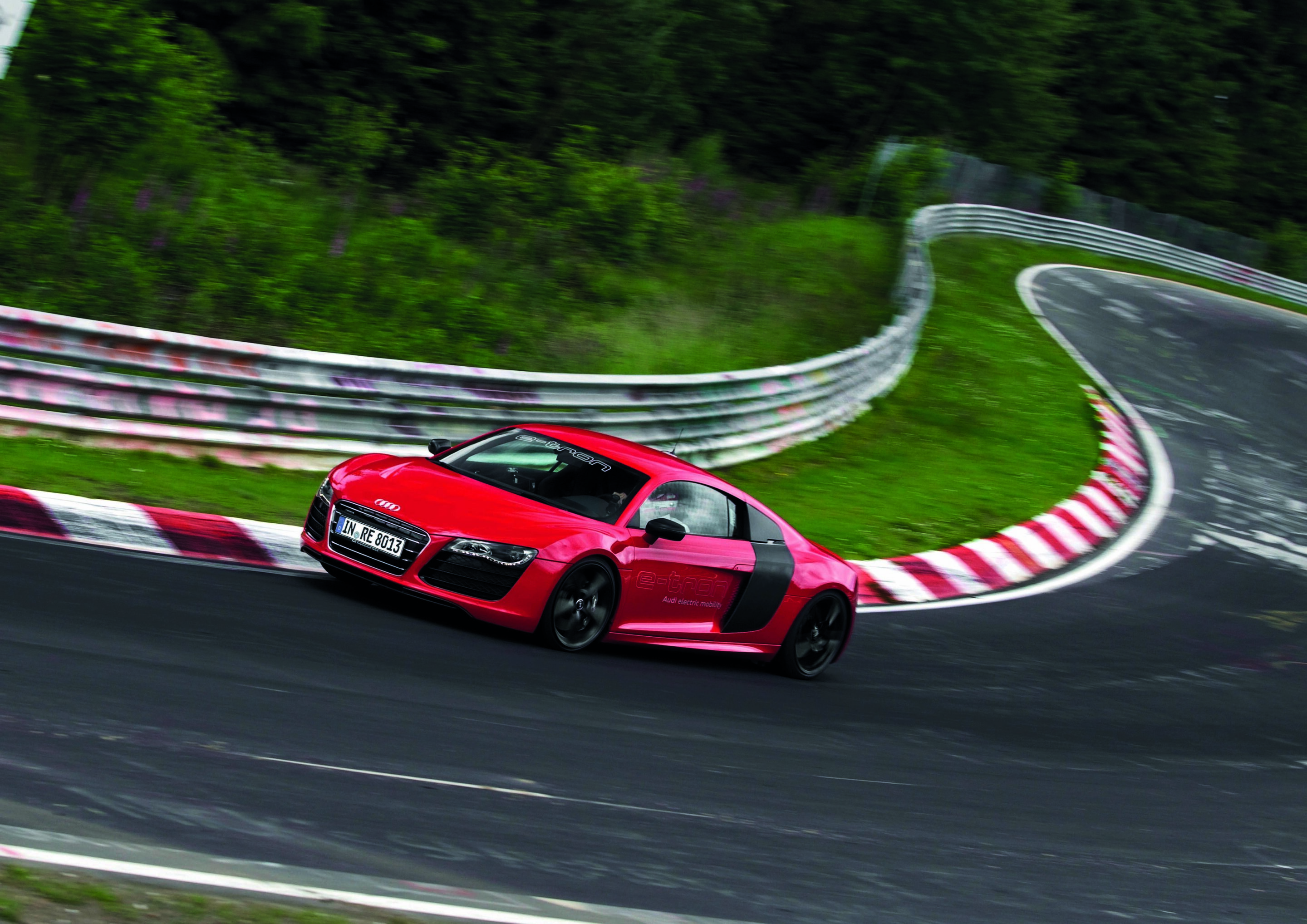Search
All search results for "audi r8 e-tron"
(18)
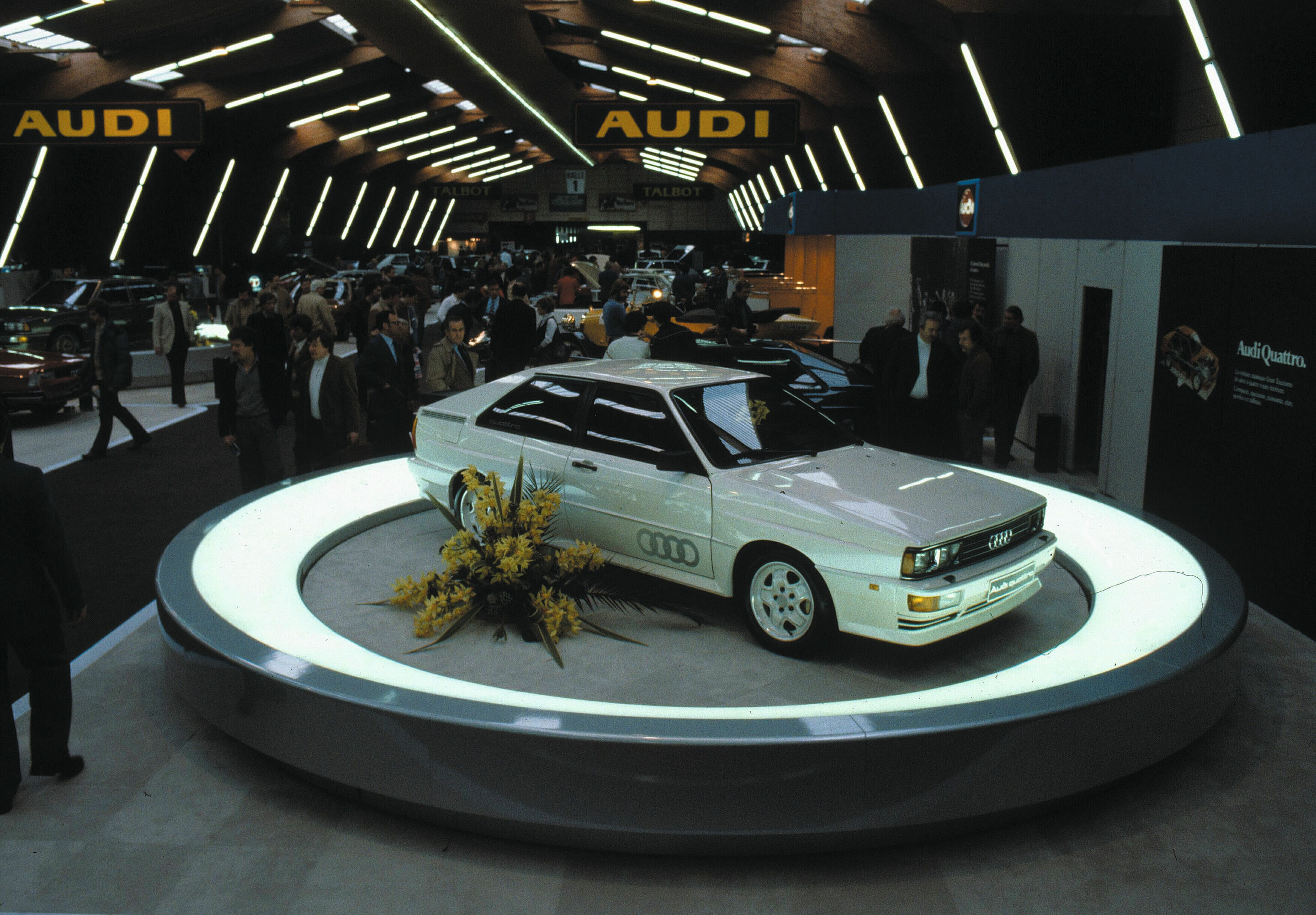 Over 40 years of quattro – over 40 years of Vorsprung durch Technik
Over 40 years of quattro – over 40 years of Vorsprung durch Technik
In 2010, the Audi quattro concept – a re-interpretation of the original quattro – appeared at the Paris Motor Show. From 2015 on, numerous concept cars heralded the future arrival of standard e-tron models with electric all-wheel drive: the Audi e-tron quattro concept (IAA 2015), the Audi e-tron Sportback concept (Shanghai 2017), the Audi e-tron GT concept (Los Angeles 2018), and the Audi Q4 e-tron concept (Geneva 2019). All terms in blue in the text are explained in detail in the technology lexicon at www.audi-mediacenter.com/en/technology-lexicon.
 The track record
The track record
Audi has fueled the appeal of quattro again and again over 40 years with a succession of spectacular concept cars. The quattro Spyder, presented at the 1991 International Motor Show (IAA) in Frankfurt am Main, Germany, was the brand’s first thoroughbred sports car of the post-war era and its first aluminum-bodied car. Just a few weeks later, Audi presented the Avus quattro at the Tokyo Motor Show. It was designed to feature a W12 engine producing 374 kW (509 PS) mounted longitudinally ahead of the rear axle, the manual transmission in the quattro drivetrain positioned between the front wheels. The Audi TT quattro Coupé and Roadster concepts presented in fall 1995 indicated the way to series production. Three more concept cars marked the expansion of the model range in 2003. At the Detroit Motor Show in January, Audi presented its Pikes Peak quattro, the predecessor to the Q7. This was followed at the Geneva Motor Show by the Nuvolari quattro two-door coupé, which paved the way for the A5. Then, in September, the Audi Le Mans quattro was the star of the IAA in Frankfurt – and also the spitting image of what would later become the R8. The Audi R8 e-tron concept, one of the stars of the IAA in 2009, was a sports car with electric-only drives at all four wheels. In 2010, the Audi quattro concept – a re-interpretation of the original quattro – appeared at the Paris Motor Show. From 2015 on, numerous concept cars heralded the future arrival of standard e-tron models with electric all-wheel drive: the Audi e-tron quattro concept (IAA 2015), the Audi e-tron Sportback concept (Shanghai 2017), the Audi e-tron GT concept (Los Angeles 2018), and the Audi Q4 e-tron concept (Geneva 2019). All terms in blue in the text are explained in detail in the technology lexicon at www.audi-mediacenter.com/en/technology-lexicon.
 The enduring appeal of quattro
The enduring appeal of quattro
From 2015 on, numerous concept cars heralded the future arrival of standard e-tron models with electric all-wheel drive: the Audi e-tron quattro concept (IAA 2015), the Audi e-tron Sportback concept (Shanghai 2017), the Audi e-tron GT concept (Los Angeles 2018) and the Audi Q4 e-tron concept (Geneva 2019).
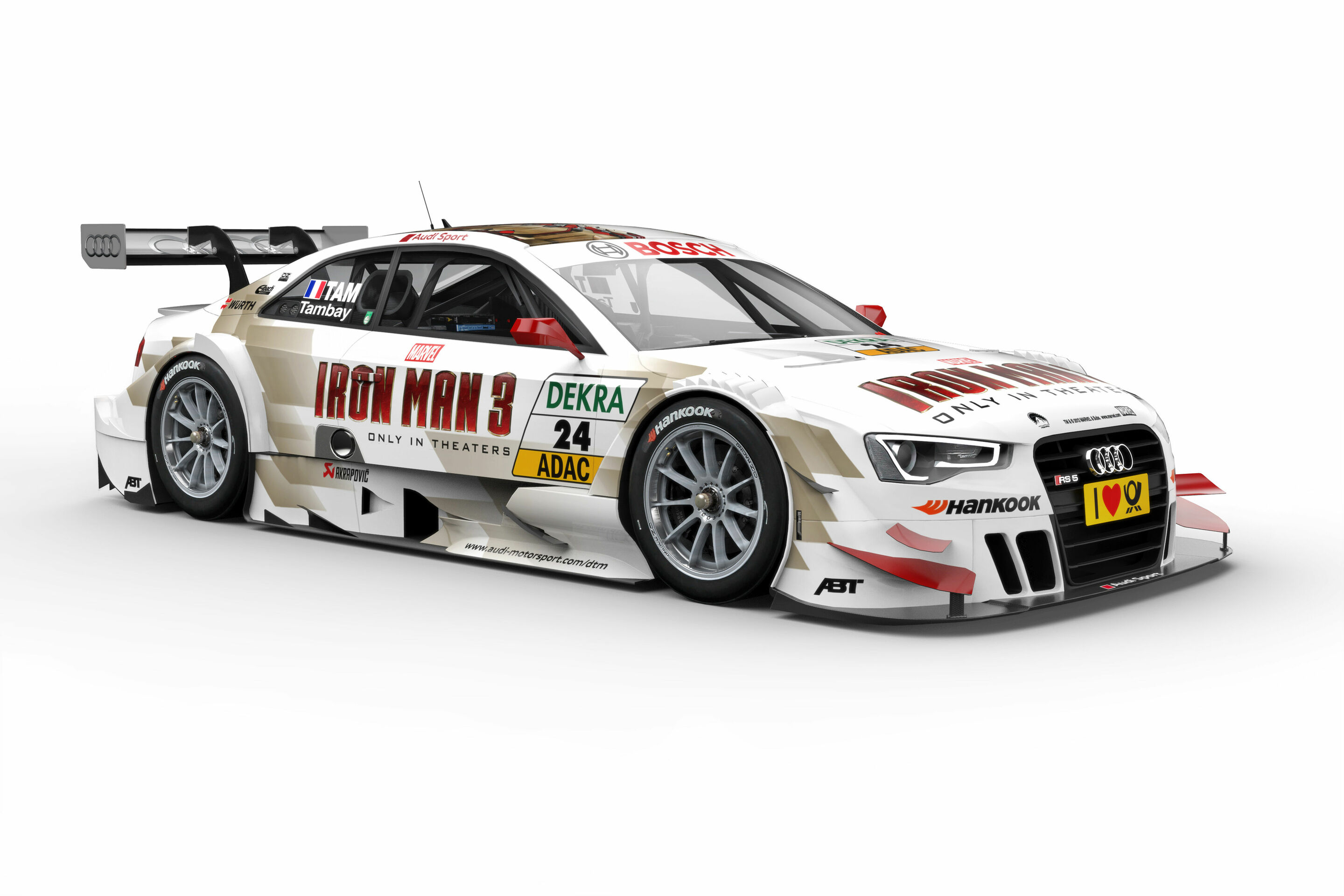 Audi RS 5 DTM ready to race at Hockenheim
Audi RS 5 DTM ready to race at Hockenheim
Furthermore, the three Audi Sport teams combine the know-how gained in more than 450 DTM races. A rookie again, despite his 83 DTM races, is Jamie Green, who will be competing at his first race weekend as an Audi factory driver at Hockenheim. The Briton, who has previously won eight rounds – including four events at the Norisring – is the only newcomer to the driver squad of the brand based in Ingolstadt. In addition to Green, Head of Audi Motorsport Dr. Wolfgang Ullrich and Dieter Gass, Head of DTM, rely on drivers from last year: a mix of seasoned campaigners and ambitious youngsters with an average of 28 years. The youngest of them will be featured in a unique way at Hockenheim: Adrien Tambay, on his race suit and on his Audi RS 5 DTM, will be advertising the movie “Iron Man 3.” His pit crew will be sporting the theme of the hero as well. In the new Marvel action film featuring Robert Downey Jr.and Gwyneth Paltrow, the Audi R8 e-tron is one of the protagonists. The movie will arrive at German theaters on Wednesday, May 1, before the DTM weekend at Hockenheim. In line with the compact schedule, the timing of the two most important events of the weekend has slightly changed as well: Qualifying starts at 14:30 on Saturday, May 4 and the race on Sunday at 13:30. As always, ARD will air live coverage on both days on “Das Erste.” Tickets for all DTM races of the 2013 season are available at www.audi-motorsport.com/DTM Quotes by the officials Dieter Gass (Head of DTM): “I’m looking forward to working even more closely with the drivers and the teams in the DTM. The first run at Hockenheim is new territory for me but I know that I’ve got a strong squad backing me that, like me, is tackling the job highly motivated. The season opener will be interesting because even after the track tests in the past few weeks we can’t assess exactly where we stand. In the few areas permitted by the regulations, we worked extremely hard at Audi Sport in the winter.
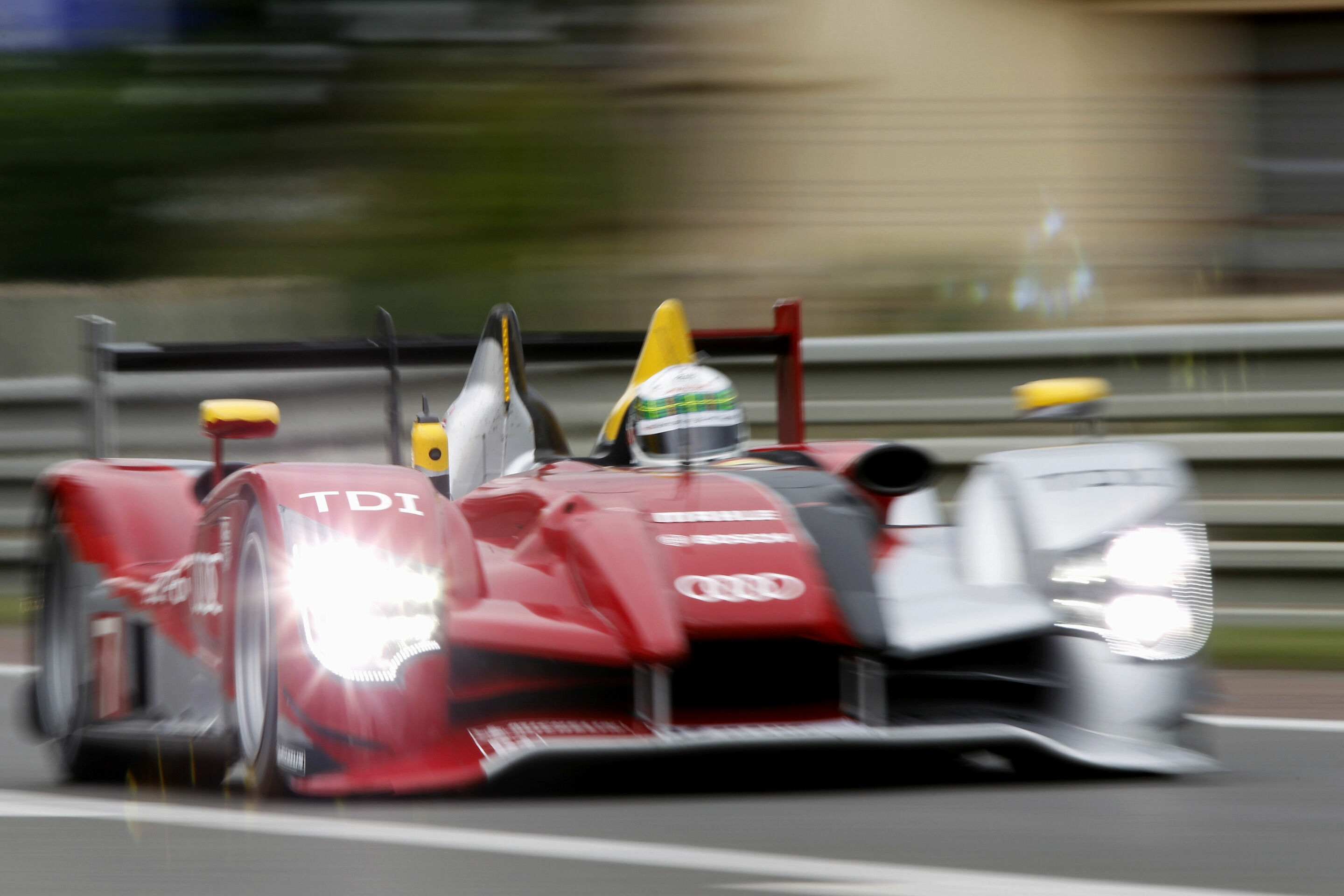 Audi fastest in warm-up session
Audi fastest in warm-up session
Allan McNish fastest in the rain Race preparations completed World premiere for the Audi R8 e-tron
Audi Sport Team Joest has completed its preparations for the 78th running of the Le Mans 24 Hours with a fastest time in the warm-up session. On a wet track Allan McNish recorded the quickest time of all 56 participants in the number 7 Audi R15 TDI.
With 3m 51.401s the Scotsman was over a second faster than the best Peugeot. The two other Audi R15 TDI prototypes were also quick in the difficult conditions in positions four and five. All nine Audi drivers have been driving in the warm-up session, all of them being happy with the handling of their cars despite the slippery track. “The race can come, we are well prepared,” said Allan McNish. Dry conditions are forecast for the start of the race at 3 p.m. Allan McNish (#7), Marcel Fässler (#8) and Timo Bernhard (#9) have been nominated as start drivers for the three Audi R15 TDI prototpyes. As usual the drivers will rotate in alphabetical order during the race: #7 McNish > Capello > Kristensen #8 Fässler > Lotterer > Treluyer #9 Bernhard > Dumas > Rockenfeller Before the race starts, the five-time Le Mans winner Frank Biela will pilot an Audi-e-tron technological show-piece based on the R8 around the race track. The high-performance electric sports car was presented on Friday evening in the pitlane of Le Mans.
